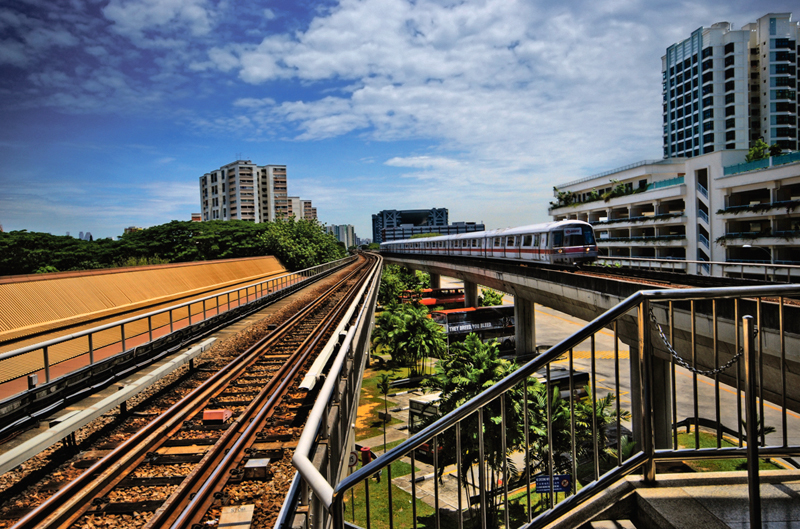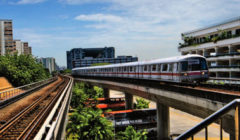New Tracks Through Old Growth
On December 19, readers responding to NY Times coverage of the Amtrak train wreck in Washington State flooded the comments section with statistics about the many European and Asian train systems boasting speeds and safety records that far outshine anything here in the US. The NY Times printed both our Federal Executive’s tweet about the US’s need to improve our infrastructure and the fact that Amtrak 501 had indeed been speeding on new tracks which, based on newspaper photographs, were laid across an older existing bridge surrounded by tall trees.
I’m not criticizing the bridge.
In fact, I feel a bit protective of my country when I read how European and Asian trains, including for example, one train that transports travelers from London to the French Alps, are so much better than ours. I am no train buff; I am, however, interested in historical context, so I accessed Google Earth on my computer. My research revealed what appears to be a wide plains area extending from France’s western most coast eastward to the Alps. Google Earth mapping reveals is no such relatively flat open space near live Interstate 5 between Seattle and Tacoma. There are foothills, cities, towns and villages.
In the United States, the densely populated areas most in need of mass transit and high-speed rail became densely developed and populated long ago. This doesn’t suggest that other nations don’t have similar topography and infrastructure challenges, but, maps tell stories.
In our little part of America, it has generally been those living near NYC and not in St. Lawrence County who support raising gas taxes to fund of mass transit. People in rural areas want good roads and affordable fuel.
Development, knowledge and socioeconomic infrastructure evolve over time.
In December, not mentioning jobs, but rather joblessness and his personal reproductive contributions, Speaker Paul Ryan called for increasing birth rates to produce tax payers. click During the 2016 election, Mike Pence touted social infrastructure that would encourage relocation of newborns from their mothers to “build” families elsewhere. In the 1800’s, similar socioeconomic infrastructure transported children on so-called orphan trains to work on mid-west farms. Some of these “orphans” were taken from their newly arrived immigrant parents.
The Underground Railroad involved physical, social and moral infrastructure.
Our latest communication infrastructure speeds up but does not always improve our recognition of how words are used to persuade us. Perhaps our most endangered infrastructure involves our own thought processes. Teachers, employers, and health care professionals alike note that our attention spans are diminishing while our blood pressures rise. Social media and 24- hour TV news has displaced in-depth daily print and reading. Of course, books and social media, while connecting us to information, can also prevent us from directly noticing our immediate environments.
After he retired from boxing, Muhammad Ali and his wife devoted time and effort to improving literacy in the African American community. Ali, diagnosed during childhood as dyslexic, understood how poor reading skills hurt his education. Still, a neuroscientist speaking on NPR about brain function suggested that the brain capacity Ali didn’t use reading books naturally engaged in processing information directly related to Ali’s activities, resulting in Ali’s quick, accurate boxing style.
Fake news or not, the printed word requires brain energy.
In ancient Greece, Socrates worried that the permanence of the printed word would detract from young people’s ability to think in ways that led to personal relationships with themselves and with their gods. The Greeks named many gods and goddesses, all of whom reflected specific skills, natural life forces and interpersonal human dynamics. The Greeks seemed to communicate with themselves while they communicated with their gods. Socrates felt literacy threatened such individualized in depth thinking. Socrates ended up censored.
Throughout human history, books came to overshadow personal observation and perception just as today’s emotional, opinion oriented social media and talking heads seek to obliterate both print reporting and any reasoned analysis that follows.
Unlike Socrates, we are greeted with “local” maps that extend far beyond our neighborhoods. What should we trust?
Most of our skills and habits are learned behavior which can be changed and improved if we want to devote the time. 2018 is a new year and most New Year’s resolutions involve forging new paths through old habits and patterns. On any given day, we have only so much cognitive capacity with which we can perceive and process the information our senses take in the moment. We need to know how to regulate our attention and choose what we feed not only our bodies but our minds. And moving a muscle changes a thought.
Safe trails and Happy New Year!










